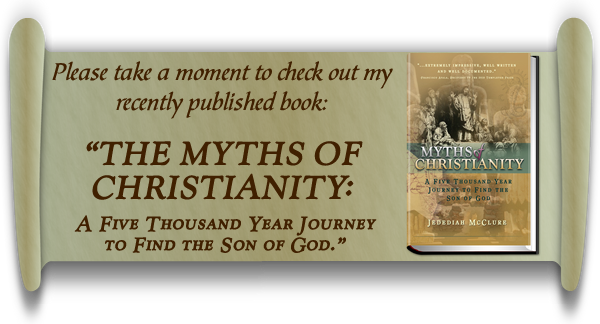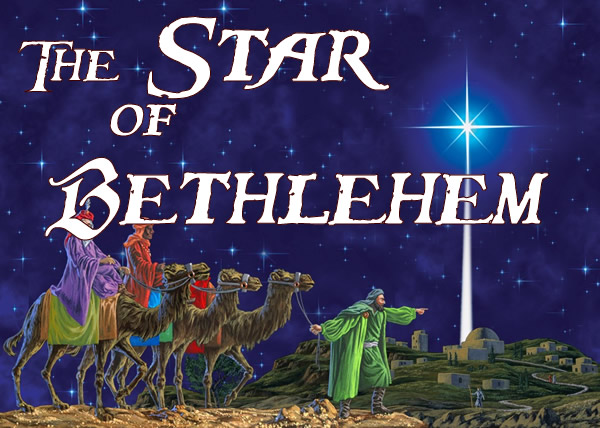
Two thousand years after the event, the Star of Bethlehem continues to arouse the interest of millions. The star is an iconic hallmark of the nativity scene: the heavenly signal that first alerted both the wise men and the shepherds of Christ’s birth.
But for millions, the Star of Bethlehem represents much more than the birth of the Son of God. It is a symbol of God's love and sacrifice. Its story also represents the proper attitude Christians should have toward Jesus Christ: Reverence, respect and worship.
The Star of Bethlehem has become a powerful symbol of faith, and so the search to find the Star of Bethlehem has been renewed with new vigor over the last several decades as believers the world over try to find physical evidence to support their beliefs.
But was the Star of Bethlehem an actual star?
The story of the Star can only be found in the second chapter of Matthew, in the New Testament. According to the Bible, wise men saw the star in the east and followed it to Jerusalem believing that it signaled the birth of a king, according to the prophecy of Balaam. Balaam, believed by Christians to be speaking prophetically of the coming of the Messiah, said,
I shall see him, but not now: I shall behold him, but not nigh: there shall come a Star out of Jacob, and a Sceptre shall rise out of Israel, and shall smite the corners of Moab, and destroy all the children of Sheth… Out of Jacob shall come he that shall have dominion, and shall destroy him that remaineth of the city.(1)
And so, upon seeing the star the wise men went to Jerusalem in search of the king.
Herod and his court were surprised and troubled to hear of the star. This indicates that the new star was not an event that laymen recognized, meaning that it was not necessarily a spectacular event.
Now when Jesus was born in Bethlehem of Judaea in the days of Herod the king, behold, there came wise men from the east to Jerusalem, Saying, Where is he that is born King of the Jews? for we have seen his star in the east, and are come to worship him. When Herod the king had heard these things, he was troubled, and all Jerusalem with him. And when he had gathered all the chief priests and scribes of the people together, he demanded of them where Christ should be born. And they said unto him, In Bethlehem of Judaea: for thus it is written by the prophet….(2)
After consulting with his court, Herod learned that according to Hebrew prophecy, the Christ would be born in Bethlehem. Herod privately asked the wise men when the star first appeared, though we are not told when that occurred. He then sent the wise men to Bethlehem, requesting that they inform him when they found the Christ child.
The wise men leave King Herod, and again saw the star, which moved before them. They “rejoiced with exceeding great joy”(3) to see the star and followed it until it stopped over the home of the Christ child. The Bible records,
When they had heard the king, they departed; and, lo, the star, which they saw in the east, went before them, till it came and stood over where the young child was. And when they were come into the house, they saw the young child with Mary his mother, and fell down, and worshipped him: and when they had opened their treasures, they presented unto him gifts; gold, and frankincense, and myrrh.(4)
The Christ child is twice referred to as a “young child” living in a “home,” not a manger. Additionally, the fact that king Herod had all boys under the age of two years killed indicates that the wise men did not arrive until a year or more AFTER the Christ child’s birth.
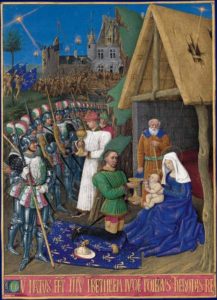 After finding the Christ child, the wise men bowed down and worshipped him and presented him with three kingly gifts: Gold, frankincense, and myrrh. They then returned to their own lands without divulging the location of the Christ child to King Herod.(5)
After finding the Christ child, the wise men bowed down and worshipped him and presented him with three kingly gifts: Gold, frankincense, and myrrh. They then returned to their own lands without divulging the location of the Christ child to King Herod.(5)
But the story has a number of contextual problems. First, and foremost, the Gospel of Matthew is the only account to mention the new star. This is peculiar considering that the new star was believed to be fulfillment of prophecy.
Second, and even more astounding, is that the star does not behave as a star, particularly a new star, should. Despite the observations of the Magi, neither King Herod nor his court was aware of the new star until the Magi brought it to their attention. Obviously the “new star” did not make a particularly spectacular appearance. And in fact, the account in Matthew never actually says the star seen by the Magi see is new, only that it represented the king of the Jews.
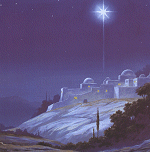 Additionally, the star not only moved across the sky but it changed course! The Gospel of Matthew claimed that the Magi followed the star from the east to Jerusalem and from there the star led them south to Bethlehem where it “stood over” the Christ child. As far as modern astronomy understands, stars simply don’t behave that way. So, was this another instance of divine magic, clearly evidencing Jesus’ divinity?
Additionally, the star not only moved across the sky but it changed course! The Gospel of Matthew claimed that the Magi followed the star from the east to Jerusalem and from there the star led them south to Bethlehem where it “stood over” the Christ child. As far as modern astronomy understands, stars simply don’t behave that way. So, was this another instance of divine magic, clearly evidencing Jesus’ divinity?
Probably not. Most likely, if the event actually happened, it was explained in the best possible way according to the limited understanding of astronomy that existed during that time. Were they actually seeing a star or was it possibly a planet or even some other celestial occurrence?
One formerly popular theory is that the Star of Bethlehem was a comet. A comet is a celestial ball moving in an orbit with a tail of dust and gas. The tails can be hundreds of miles long and can often be viewed from the earth.
In the middle ages, many artists portrayed the Star of Bethlehem as a comet blazing in the sky above the manger, arguably the most famous of these paintings was Giotto di Bondone’s “Adoration of the Magi” which portrayed the star as a comet blazing over the nativity scene.
Allegedly Chinese astronomers witnessed a celestial event in 5 BC that was interpreted to be a comet, which lasted for 70 days.(6) It has been argued that China, Judea and Persia are all on similar latitude and would therefore all have been able to see the same celestial event. Therefore, the Magi could have seen the comet and interpreted it as the “star.”
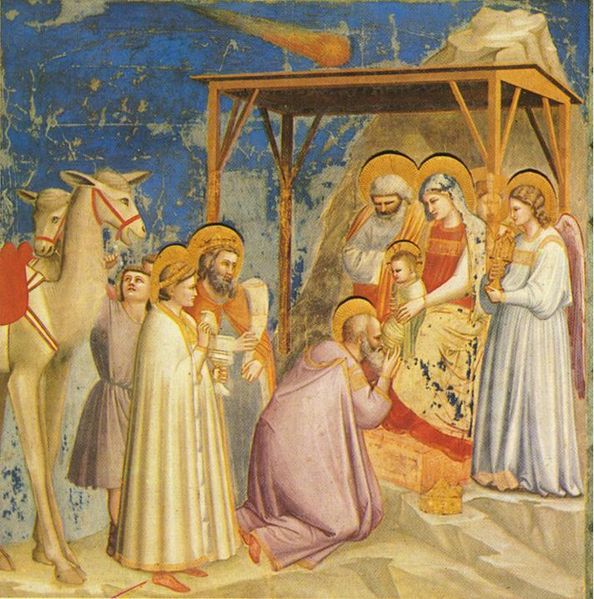
However, there are several flaws in this theory. First, in ancient times comets were seen as harbingers of doom, death and disaster and not as representative of the birth of a new king.(7) It’s highly unlikely that the Magi would have considered the sight of a comet as something to celebrate.
Second, a comet does not fit the above characteristics of the Star of Bethlehem: A comet does not stop moving or change course; it would have been noticed by most people in the night sky and it is unlikely it would have been interpreted as a new star by the Magi.
History gives us a very illuminating insight into this theory. The first portrayal of the Star of Bethlehem as a comet was painted by Italian renaissance artists, Giotto di Bondone. The Nativity painting was commissioned in 1301. In that same year Halley’s Comet made a routine visit to earth and was visible for months. Clearly the comet acted as the inspiration for Giotto’s painting as well as numerous others and may have inspired our modern interpretation.
However, this story’s origin may lie in another incident that would have been familiar to the first century Christians. In 66 AD King Tiridates of Armenia led a delegation of Magi to Rome to confirm his kingly title. It just so happened that the delegation occurred during the appearance of Halley’s Comet. Such an event would have had incredible significance in the minds of the early Christian: A king arises, was recognized by the Magi and Roman authority, and heralded by an incredible and rare stellar occurrence.
For an author trying to establish the divinity of Jesus, such an addition would have had a powerful influence among the people. Not only does the Gospel of Matthew copy the same elements as the King Tiridates story, but even copied similar wording. The Gospel of Matthew stated that the Magi “departed into their own country another way.” Dio Cassius, an ancient historian similarly recorded that "The King did not return by the route he had followed in coming." Coincidence? Probably not.
Does this mean that the author of the Gospel of Matthew lied or that the “star” didn’t exist? Not necessarily, but it could indicate that popular stories during that time may have influenced the development of the stories of Jesus, popping up as innocent embellishments that would have been both familiar and welcome to the population at large.
***
Continue the series with WHO WERE THE WISE MEN? or read other articles on the evolution of Christian traditions.
____________
(1) Numbers 24:17, 19
(2) Matthew 2:1-5
(3) Matthew 2:10
(4) Matthew 2:9, 11
(5) Matthew 2:12
(6) quoted in the Science/Discovery Channel program “Search for the Star of Bethlehem.”
(7) Dr. Michael Mulnar, The Star of Bethlehem: The Legacy of the Magi, Rutgers University Press, 1999, p.17-21.
(8) Matthew 2:12
(9) Jenkins, R.M. (June 2004). "The Star of Bethlehem and the Comet of AD 66." Journal of the British Astronomy Association, pp. 336-43. http://www.bristolastrosoc.org.uk/uploaded/BAAJournalJenkins.pdf. Retrieved September 10, 1009.

